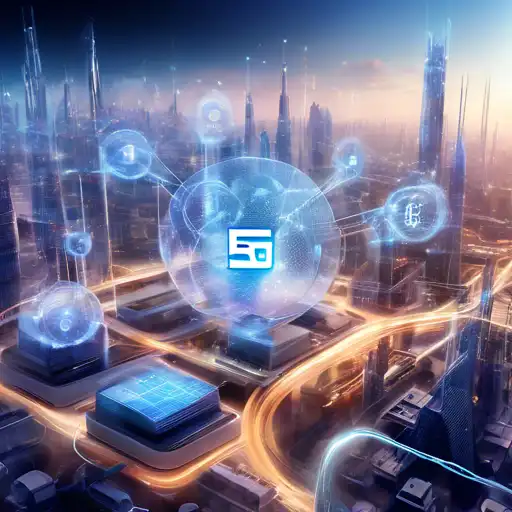Introduction to the Next Generation of Networking
The digital landscape is undergoing a monumental shift with the advent of 5G technology. This next-generation networking standard is not just an upgrade; it's a revolution that promises to redefine how we connect, communicate, and consume digital content. But what lies beyond 5G? This article explores the future of networking, from the current rollout of 5G to the speculative technologies that may follow.
Understanding 5G: More Than Just Speed
5G stands for fifth-generation cellular network technology. It's designed to deliver faster data speeds, lower latency, and more reliable connections on smartphones and other devices than ever before. But 5G is not just about speed; it's about capacity and connectivity. With the ability to support up to a million devices per square kilometer, 5G is the backbone of the Internet of Things (IoT), enabling smart cities, autonomous vehicles, and more.
The Pillars of 5G Technology
5G technology is built on three main pillars: enhanced mobile broadband (eMBB), ultra-reliable low latency communications (URLLC), and massive machine type communications (mMTC). These pillars support a wide range of applications, from high-definition video streaming to critical infrastructure and industrial automation.
Beyond 5G: What the Future Holds
As we stand on the brink of widespread 5G adoption, researchers and technologists are already looking beyond to the next wave of networking innovations. Concepts like 6G, terahertz communication, and quantum networking are beginning to take shape, promising even more transformative changes.
6G and the Integration of AI
While 5G is still in its infancy, the groundwork for 6G is already being laid. Expected to debut around 2030, 6G aims to integrate artificial intelligence (AI) at its core, enabling self-optimizing networks that can predict and adapt to user needs in real-time. This could lead to unprecedented levels of efficiency and personalization in digital services.
Terahertz Communication: The Next Frontier
Terahertz (THz) communication is another area of exploration, offering the potential for even faster data transmission rates. By operating at higher frequencies than 5G, THz communication could enable new applications in imaging, sensing, and beyond.
Quantum Networking: A Leap into the Future
Quantum networking represents a radical departure from traditional networking technologies. By leveraging the principles of quantum mechanics, it promises ultra-secure communication channels and the ability to solve complex problems beyond the reach of classical computers.
Preparing for the Future of Networking
As we look toward the future of networking, it's clear that the technologies on the horizon will require new infrastructure, standards, and skills. Businesses, governments, and individuals must begin preparing now to harness the full potential of 5G and beyond.
Investing in Infrastructure
The rollout of 5G and the development of future technologies will require significant investment in infrastructure. From fiber-optic cables to small cells and satellite networks, building the foundation for next-generation networking is a massive undertaking.
Developing New Skills and Knowledge
As networking technologies evolve, so too must the skills of those who design, implement, and maintain them. Education and training programs will need to adapt to prepare the workforce for the challenges and opportunities ahead.
Conclusion: The Unstoppable March of Progress
The future of networking is bright, with 5G serving as the gateway to a new era of connectivity and innovation. As we explore the possibilities of 6G, terahertz communication, and quantum networking, one thing is clear: the way we connect is changing, and the potential is limitless.
For more insights into the latest in technology and innovation, explore our technology section.
